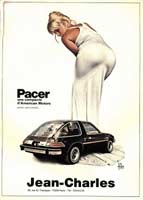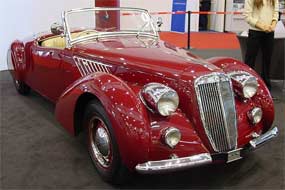News and Site Updates Archive 2010/03/15
Reality is what doesn’t go away when you stop believing in it.
- Philip K Dick
15 Mar '10 -
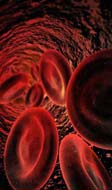 |
The new cancer drug worked for a retired Rhode Island public television executive, who has fought
metastatic gastrointestinal cancer for 7 years with what doctors call daisy chaining. When her malignancy no longer responds to a treatment, she switches to another, moving from one targeted
therapy to the next to the next. She took Sutent, the 2nd in her chain, for 18 months. "I'm alive because of these drugs," the 67-year-old said. The 1st drug she took allowed her
to see her 2nd grandson born in 2005; Sutent kept her well for his 5th birthday. For those who can afford a pill with a retail price of about $200, or whose insurer will cover it, Sutent is a
life extender. The metastatic cancer of patients on Sutent was held in check 21 weeks longer than that of patients who began on a placebo. Sutent is part of an explosion of treatments
that attack cancer at the molecular level, holding the promise of turning intractable malignancies into chronic diseases like diabetes or HIV. Targeted therapies already extend life - and add
hugely to the cost of end-of-life care (Sutent costs $48,720 a year). While 1/3 of those who switch to Sutent get no benefit, it's a lifeline for thousands. For people with private
health insurance or who qualify for Medicare (the tax-funded program for Americans over 65), Sutent isn’t a personal financial issue. But there's no free lunch. The money comes
from somewhere. "We worry that it’s not sustainable," said one director at the Harvard University-affiliated Dana-Farber Cancer Institute in Boston. "Ultimately, our country may
say, 'Okay, we can have these expensive cancer drugs or we can have vaccines for our kids - what do you want?'" What else could you realistically expect? |
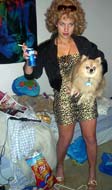 |
The average American, according to the Clean Air Council, creates 4.6 pounds of trash per
day, much of it non-biodegradable, meaning it accumulates (not necessarily where we’d like) if left unchecked. Californians Against Waste estimates Americans consume some 84
billion plastic bags a year (product of roughly 12 million barrels of oil) — many of which, along with other terrestrial waste, collect in an area in the northern Pacific Ocean known as the
Eastern Garbage Patch, a floating mass now more than twice the size of Texas. Most impressive about our relationship to garbage is how well we keep it hidden: 90% isn’t even visible in
products and services we use as consumers but is rather a by-product of extraction and manufacturing. How many people visit a landfill, let alone a toxic-waste storage site? How about
vast manure pools — runoff of our industrial meat farms? Packaging is also a problem. The Clean Air Council points out that almost 1/3 of the 230 million tons of trash generated in
America by consumers is packaging - fast food containers, disposable razors, plastic shopping bags are created principally to be discarded. In the midst of consuming, it’s easy to
ignore this as it's disconnected from the reality we confront as individuals. The mandate of consumerism requires a certain amnesia about what we waste, encouraging us to forget the old and
buy the new. Confronting the physical reality of waste, however, might force re-examination of our relationship to rampant consumerism. Each year in China, 45 billion pairs of
chopsticks are discarded, fashioned from some 25 million trees. (Via the New Shelton wet/dry). |
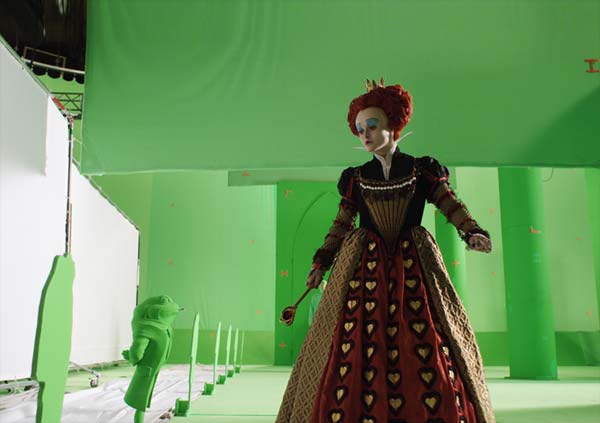
Roll over image to view final version
I recently went to see Alice in Wonderland. I have great respect for all the principals involved but couldn't help but wonder if Tim Burton had made the correct
artistic decision to enlarge both his wife's head and Johnny Depp's eyes. I would have preferred, I think, more normal
humans that would've emphasised the unusual appearance of the non-human characters. (What do you think?) The Red Queen is filmed against a green-screen background (click
here once for a larger image)
that's been dressed with green set pieces - the columns will cast accurate shadows and the wooden "stand-ins" for the frogs give the actress scene partners and help her establish eye-line. In
the final composite (click here
once for larger image), all surfaces are lit and the green-screen photography is colour-corrected to fit the scene. |
|
 |
From Colin Marshall, "Fourteen Theses on New Zealand": 3. New Zealand has cool
cities - Wellington is New Zealand's capital, and, while not quite as large as its big northerly brother (389,000 metro, more like 170,000 at the centre), feels livelier. Several times, rural
Kiwis informed me that Wellington is "better" than Auckland. In the sense that Wellington offers more galleries, late night cafés and record shops, it is indeed better (and often called the
"cultural capital," in addition to being the capital capital). If a project required me to live in Wellington for a year, I'd jump at the chance. 8. New Zealand assigns one police car to
each island - I only spotted a handful of cop cars in the entire trip across the country, and I'm pretty sure I just saw the same two cars a few times. They've got distinctive blue-orange
checkerboard pattern, so you can't really miss 'em. This hands-off approach to the law appears to extend to other realms of human affairs. Because I was not constantly being told where not
to go or what not do to by NZ officials and official signage, I assume its people do not bust out with huge lawsuits at the slightest provocation of their tender feelings. I have a feeling that
when a Kiwi slips on some ice or spills hot coffee on his groin, his first instinct is not to demand financial restitution. 14. New Zealand is ridiculously fun - In conclusion: A+, would visit
again, and I haven't yet mentioned the food, which even on airplanes was delectable. [I couldn't agree more.] |
 |
Why-Can't-More-Countries-Be-Like-New-Zealand?: A different approach to policing in
NZ's Southland (lower South Island) includes officers visiting criminals at home for a friendly chat. This has contributed to a 17% drop in crime in the region. (Burglaries are down
28%.) The force's focus is on reducing crime rather than just arresting criminals - they work to prevent crime rather than reacting once a crime had been committed. "Houses we may regularly
visit over the weekend are visited again during the week to work out why we were called and what interventions can be put in place to prevent us being called the following weekend." They help
to sort out issues and this can result in other helping agencies being called in. The new focus on crime fighting is already being used in some other areas of the
country. More. |

Quantum Cops in the Uncertainty Principality |
 |
Propulsion physicist Marc Millis speaks: When you look at an
experiment where light is split and goes through more than one path, it seems paradoxical that things somehow appear to be connected instantaneously. In each separate path, either change the
length (perhaps sending it through a mirror so that one path gets a lot longer) or modify something else. Recombine paths and compare. Somehow the change you made in one path affects the
other paths before they recombine. What’s going on? Is each fragment of light somehow still connected even after it’s separated from the others? Or is there some way that other
relationships need a full-closed loop before reality precipitates? Quantum theory (using waves rather than particles), says a part moves forward in time and a part moves backward in
time. When the math of both coalesces, that's the point where reality exists. Are phenomena connected in some way where the only things allowed to happen are those that balance in the
flow of time? Are there other potentials that are just not allowed in this particular reality? Light might not necessarily be connected from one path to the other in a direct sense,
but in how each is related though a shared flow of time and events - a multitude of things could have happened, but only the ones that "balance out" seem to have been connected to each other in
time. Does quantum entanglement definitely show instantaneous connections, or something else that's going on? [This reminds me of stock scammers that send different stock predictions to
thousands, then contact a second time only those that received correct predictions, then contact a third time that much smaller subset that received more correct predictions and so on. The reality
to this small group is that here is a stockbroker who is infallible - his predictions "prove" his success. Perhaps we're scammed by reality into only perceiving what has gotten through?] |
 |
Our democratic system has been transformed into what the political philosopher Sheldon Wolin labels inverted
totalitarianism. Inverted totalitarianism, unlike classical totalitarianism, does not revolve around a demagogue or charismatic leader. It finds expression in the anonymity of the corporate
state. It purports to cherish democracy, patriotism, a free press, parliamentary systems and constitutions while manipulating and corrupting internal levers to subvert and thwart democratic
institutions. Political candidates are elected in popular votes by citizens but are ruled by armies of corporate lobbyists in Washington, Ottawa or other state capitals who author the legislation
and get the legislators to pass it. A corporate media controls nearly everything we read, watch or hear and imposes a bland uniformity of opinion. Mass culture, owned and disseminated by
corporations, diverts us with trivia, spectacles and celebrity gossip. In classical totalitarian regimes, such as Nazi fascism or Soviet communism, economics was subordinate to
politics. "Under inverted totalitarianism the reverse is true," Wolin writes. "Economics dominates politics – and with that domination comes different forms of ruthlessness." Via
the new Shelton wet/dry. [While I don't 100% agree with this writer (Chris Hedges), there are some very worthwhile points
being made.] |
|
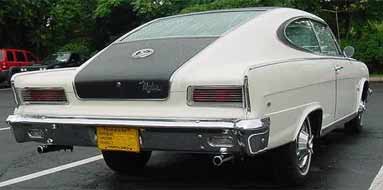 |
 |
- 1966 Marlin - American Motors Corporation (AMC) 2-door hardtop fastback. Vincent
Geraci (chief of product design and product identity at Chrysler after AMC's buyout) viewed the Marlin as "an exciting program. We took a 1965 body design and turned it into a sportier
version. But enlarging the car from its original concept [the Tarpon] and raising the roof produced an adverse effect on overall appearance." Bob Nixon (who became Jeep’s design chief
at Chrysler) dismissed the project as an "ugly embarrassment" and said the assignment to create a sporty fastback on the Classic platform was "like trying to build a Corvette on a Buick sedan
body. It just doesn't work."
- AMC Pacer ca 1981 - The "outside of the box" thinking incorporated by AMC in the Pacer as
the first "wide, small car" attempted to create a revolutionary change in marketplace. However, a radical departure from what was accepted by consumers as "good styling" was a risky strategy
and led to its market failure after 5 model years. The Pacer's design focused on maximising the internal sense of space, while the market at that time was focusing on external dimensions.
- Citroën AMI 6 1968 - Citroën responded to a market need for a vehicle slightly
larger and less utilitarian and rustic than its previous vehicles. The Ami's seats were easily removable. Sales pitches of the Ami included photographs of the seats being used as picnic
chairs. The Ami 6 sedan was distinguished by an unusual reverse-raked rear window. James May owned one of these, so they can't have been too bad (just ugly).
- SsangYong Rodius 2006 - Available in 7, 9, and 11 seat configurations (3 or 4 rows),
the seats folded to act as tables or folded further (double folded) to add extra cargo area. They could be turned around, encouraging conversation. In 2005 the Rodius won the dubious
distinction of being voted "the ugliest car ever made" by visitors to motoring website CarData, and is described by Top Gear Magazine as a car "that looks like it got bottled in a pub brawl
and stitched back together by a blind man" as well as being described as "having a face like a burnt thong" by the Australian magazine Wheels.
- Fiat Multipla 1998 - Unlike any other on the market. Much shorter and wider than
its rivals, with 2 rows of 3 seats. The Multipla was an instant hit with Italian buyers, but its styling meant that sales elsewhere were less successful. Nevertheless, it won Top
Gear's Car of the Year award in 2000. In 2004 the Multipla underwent a major facelift to shed its original styling for a more restrained look, with the intention of attracting more
buyers.
|
 |
Vitology may become a new kind of life, because software is arising that has the functions of life, but not the
substrate of biology. As this living software evolves, some versions will unambiguously seem to be alive, and soon thereafter other versions will aggressively claim to be sentient and
conscious. All life forms try out, via mutation, different shapes and behaviours; software won’t be any different. If these sentience or consciousness claims are helpful to survival, we can
expect seeing more software adopt the same position. It's not necessary to posit that the vitological software "wants" to survive for this to occur, any more than it is necessary to posit
that bacteria "want" to survive. It's simply that things that do survive become more prevalent and things that don’t tend to disappear. We can either deny vitological claims of consciousness,
or broaden membership in the huge family of life. To do the former is to incite a long, unpleasant conflict (think slavery and its disavowal of African humanity). To do the latter requires
more than a biologist’s expertise. Hence, avoiding a conflict amongst substrates (flesh versus firmware, wet versus dry, natural versus artificial, DNA-coded versus digitally-coded) is a reason to
redefine life. Biologists purport to be the experts on defining life. They believe it is something that is (1) organised, (2) exchanges matter and energy with the environment, (3) reproduces,
(4) responds to stimuli, (5) develops and (6) adapts. Physicists, as they're the experts on physical reality (of which life is certainly a part), have also tried to define life. To them, life
is something that — for a while — runs counter to the Second Law of Thermodynamics, which says that everything in the universe becomes more disordered and random. Since life actually builds and
maintains order in a defined area, it seems to defy physics and this gives it a unique defining characteristic. A 4th domain, "digitaea" could accompany archaea, bacteria and eukaryota in the Tree
of Life. It would branch off animals and hominids just as those groupings branched off plants and fungi long ago. Three species of digitaea are suggested: stemeids that are mindclone
continuations of hominids, nanoids that are new life forms assembled from self-replicating nanotechnology, and ethereates that are purely software-beings, lacking any physical
instantiation. Via The New Shelton wet/dry. |
 |
Why-Didn't-I-Think-of-This?: David Phillips, a civil engineer at the University of California/Davis, was out doing his grocery shopping
when he spied something - a display touting that purchases of Healthy Choice products would earn frequent flyer miles - lots of them, in fact. "I started off buying cans of soup. Then
I discovered the chocolate pudding angle. When I found individual cups of pudding selling for $.25, I escalated my plans, driving to about 15 Grocery Store Outlet stores in a weekend. I
filled my van with chocolate pudding. After that, I made contact with a local Grocery Store Outlet manager and had him special order me 60 more cases of 144. Are you ready for my
totals? 12,150 cups of chocolate pudding bought for $3,140 (all doubled) for a total of 1,215,000 miles! You're probably wondering what I did with all that pudding. That's where my plan
really clicked together. I made arrangements with several local food banks to donate all the pudding. To get my UPCs in before the double miles deadline, I even put the food banks to work for
me - they pulled off the UPCs as they served the food and kept them for me to send in. I'm planning to write off the entire pudding purchase as a charitable donation, saving me over
$800. Thus, after taxes are considered, the 1,215,000 miles cost me about $2,325." |

Countries with Universal Healthcare |
 |
The space shuttle Challenger disaster occurred on 28 January 1986, when the shuttle broke apart 73
seconds into its flight, leading to the deaths of its 7 crewmembers. Contrary to the flight dynamics officer's initial statement, the shuttle and external tank did not explode but instead rapidly
disintegrated under tremendous aerodynamic force; the fuel and oxidiser stored within it were released, producing the appearance of a massive fireball. However, it was only "localised combustion"
of propellant, primarily composed of vapour and gases. Had there been a true explosion, the entire shuttle would have been instantly destroyed, killing the crew at that moment. The more
robustly constructed crew cabin survived the break up, which occurred at 48,000 feet (14.6 kilometres), and the detached cabin continued along a ballistic trajectory, exiting the cloud of gases; 25
seconds later, the trajectory of the crew compartment peaked at a height of 65,000 feet (19.8 kilometres). NASA estimated separation force at 12 to 20 g (120 to 200 metres/second2) very
briefly, but within 2 seconds, force dropped to below 4 g (40 metres/second2); within 10 seconds, the cabin was in free fall. These forces were likely insufficient to cause major
injury. At least some astronauts were alive and conscious after the break up, as 3 of the 4 Personal Egress Air Packs on the flight deck were activated. Investigators found the unused air
supply roughly consistent with consumption expected during the 2 minute 45 second post-break up trajectory. The cabin hit the ocean surface at roughly 207 miles per hour (333 kilometres/hour),
imposing a load factor of well over 200 g (2 kilometres/second2), far beyond its structural limits or the crew's survivability level. Some experts believe most if not all of them were
alive and possibly conscious during the entire descent until impact with the ocean. Unfortunately, escape was impossible because providing a launch escape system was deemed undesirable due to
"limited utility, technical complexity and excessive cost in dollars, weight or schedule delays." |
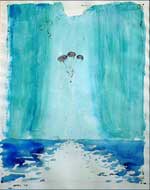 |
The space shuttle Columbia disaster occurred on 1 February 2003, when the shuttle disintegrated over Texas during
re-entry into the earth's atmosphere, with the loss of all 7 crewmembers. A group of small (1 mm) Caenorhabditis elegans worms, living in petri dishes enclosed in aluminium canisters,
survived re-entry and impact with the ground and were recovered weeks later, still alive. They were part of a study of the effect of weightlessness on physiology. A Debris Search Pilot and a
Debris Search Aviation Specialist died in a helicopter crash that injured 3 others while participating in the ground search effort. On 9 May 2008 it was reported that data from a disk drive on
board Columbia survived. The drive was used to store data from an experiment on properties of shear thinning. Although part of the 340-megabyte drive was damaged, the area containing
the data was unharmed because the on board computer was running DOS with the FAT16 file system, so all data was written to the drive in sequence; a more modern operating system would've scattered
information around for performance reasons. Data obtained made it possible for the experiment's results to be published. Another recovered item was a videotape made by the astronauts during
re-entry. It lasts for 13 minutes, showing them conducting routine procedures and joking with each other, none indicating concern. The video shows them putting on gloves and passing the video
camera around in order to take footage of plasma and flames visible outside the orbiter windows (a completely normal occurrence); it ends approximately 4 minutes prior to the start of the shuttle's
disintegration. On normal flights, the recording would continue through landing, but the remainder of this tape was destroyed in the accident. Had NASA instructed them to check for damage
before returning, there was a 5-day overlap for possible rescue by the shuttle Atlantis - but they didn't. An automated parachute system is now planned for future space vehicles. |

Three images with an orange, green, and blue filter were combined to create this. The illuminated
crescent is centred roughly around the South Pole (south is at the bottom of the image). The outline of Antarctica is visible under the clouds that form the striking south-polar vortex. Pack
ice in front of the coastline with its strong spectacular reflection cause the very bright spots on the image. From a distance of 633,000 kilometres, one pixel represented 12
kilometres. Taken 12 November 2009. |
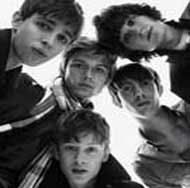 |
You're in a crowded shopping mall when suddenly, without
any warning, you feel light-headed. Just cross your legs, squeeze your muscles, and ah! You've prevented a fainting spell. Half of us will faint at some time - and for some, mostly
women ages 25 to 40, fainting is a regular experience brought on by simply standing up quickly. If you're prone to fainting and your doctor has ruled out an underlying medical condition, try
this:
- Cross one leg over the other while standing, making sure that both feet are flat on the floor.
- Tense your leg muscles, squeezing your legs firmly together as if holding a $100 bill between your knees on a windy day.
- Tighten your buttock and abdominal muscles. Breathe normally until your symptoms pass. Hold it for at least 30 seconds.
If you still feel faint after stopping the manoeuvre, sit or lie down flat while tensing your leg, buttock, and stomach muscles. If you faint once a month or more, tell your doctor as you could have
anaemia, low blood sugar, an irregular heartbeat, congestive heart failure, or some other blood vessel problem. |
|
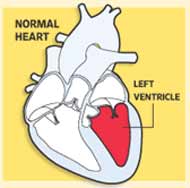 |
A woman and her husband of 40 years were driving home one wintry night when their car suddenly hit the curb. The woman managed to avoid a crash while stopping the car; she called for help
on her cellphone and tried to revive her husband before the ambulance showed up. But at the hospital, soon after learning her husband had died of a heart attack, her heart appeared to give
out as well. She experienced sudden sharp pains in her chest, felt faint and went unconscious. An X-ray angiogram showed no evidence of a heart attack - her coronary arteries were
completely clear. Doctors eventually determined that she suffered from broken-heart
syndrome, a malady which mimics heart attacks, but appears to have little connection with coronary artery disease. Instead, it's typically triggered by acute emotion or physical trauma
that releases a surge of adrenaline that overwhelms the heart, "freezing" much of the left ventricle, the heart's main pumping chamber, disrupting its ability to effectively pump blood. The
phenomenon is a "concussion" of the heart - a heart attack triggered by stress rather than a blocked artery. In addition to such common emotions as grief and anger, it has been triggered by
anxiety over making a speech, a migraine headache, an emotional response to a surprise party, being overwhelmed by new software at work, seeing one's barn burn down, or losing money at a
casino. But physical stress can cause a broken heart as well - a sudden drop in blood pressure, asthma attack, surgical procedure, adverse drug reaction, and withdrawal from alcohol are
among such causes. It can be fatal on occasion, but generally patients recover quickly, with no lasting damage. |
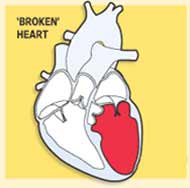 |
|
Sex in advertising is the use of sexual or erotic imagery (also called "sex appeal") in advertising to draw
interest to a particular product for purpose of sale. A feature of sex in advertising is that the imagery used, such as that of a pretty woman, typically has no connection to the product being
advertised. The purpose of the imagery is to attract the attention of the potential customer or user. According to Calvin Klein: "The abundance of bare flesh is the last gasp of
advertisers trying to give redundant products a new identity." Women respond more favourably to sexual ads
when the item in the ad is described as a gift from a man to a woman. In addition, women have high positive responses to sexual ads that depict a committed and loving man. Researchers
showed participants two versions of a sexy wristwatch ad; in the 2nd version, a red ribbon was tied around the watch, and the following sentence was included: "This watch is a gift from a man to the
special woman in his life." (As a control, participants also viewed non-sexual ads with the same imagery and messaging.) When viewing the sexual ads, women responded more favourably to the
ad with the gift. However, men preferred the sexual ad without the watch being depicted as a gift. The ads above are for cars, toilet paper, soft drinks, laptops, milk. |
 |
"The church," I told strangers, "is the bride of Christ. And he's coming back any day now to claim us." But he didn't show, and that was just the beginning of the disappointments
I would tally through the next 20 years. Unanswered prayer, tragedies that could not be properly explained, events that made my loving God look cruel and heartless. I read Christian
publications that were militant and ignorant, calling women to keep their hair long and their heads covered out of respect to their men and to wear long skirts, no slacks, ever. An elder in our
church paddled my infant for not lying still during a diaper change. He left bruises on her legs. A couple got divorced and we all whispered our disdain. One morning I sat with Bible on
my lap and found my mind wandering. I tried to make myself read, to learn, to be cleansed, but I was thinking of going to the library instead. My prayers grew perfunctory. I sang the
hymns on Sunday morning less enthusiastically. I began to listen to our talk at our church suppers. We, the whole lot of us, were arrogant, smug and intolerant for any way of life but our
own. Finally I slipped my hand from God's. We had been walking hand in hand for a long time, but one day I just let
go. I saw his back in front of me, and some part of me said to hurry, catch him before he's
completely out of sight, but I did not. I just watched him until he disappeared. God was a hot and cold lover who would withdraw without explanation. No matter how much I strove to
please him, it was obvious how far I had to go, how frustratingly unattainable my goal of holiness. My love for him faded, and with that love went my submission, my unquestioning acceptance of
everything I was taught. I looked at other believers and marvelled that they continued to persevere. They were cheerful in the face of disaster, assuring everyone else that God would bring
something good out of their brain tumours, lost jobs, missing children. Extricating myself from the church was the most difficult thing I have ever done. |
 |
Removal of specific parts of the brain can induce increases in a personality trait
which predisposes people to spirituality, according to a new clinical study in Italy. Following removal of cancerous tumours, significant increases in self-transcendence scores were observed in
those patients who had tumours removed from the posterior regions of the brain, but not from those whose tumours were further towards the front of the brain. Specifically, this increase was
associated with surgical removal of two distinct regions of the brain: the left inferior parietal lobule and the right angular gyrus. This provides evidence that some brain structures are
associated with spiritual thinking; individual differences may make some people more prone than others to spirituality. [My read on this is that removal of part of the brain increases religious
feelings. The smaller the brain the stronger the feeling? That sounds right.] Via the New Shelton wet/dry.
Theurgy describes the practice of rituals, sometimes seen as magical in nature, performed with the intention of invoking the action or
presence of one or more gods, especially with the goal of uniting with the divine, achieving henosis, and perfecting oneself. (The goal of Henosis is union with what is fundamental in reality.) Nous is a philosophical term
for mind or intellect. Outside of a philosophical context, it is used, in English, to denote "common sense." Let's hear it for nous. |
|
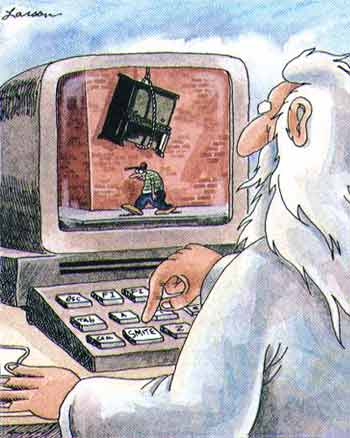
God at His Computer |
|
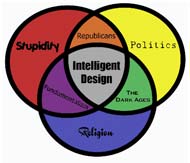 |
In Dostoevsky’s famous novel The Brothers Karamazov, Ivan Karamazov famously insisted that without God, everything is permitted. This, of course, is simply untrue. Morality is not dependent on the existence of God, and centuries of nontheistic ethical philosophies, from deontology to
utilitarianism, demonstrate this fact. Indeed, it is instead true that with God, everything is permitted. Because human beings don't have access to the thoughts of their deities,
their religious moral systems frequently conflict with and contradict each other. This has been demonstrated over and over, as people have at once justified slavery and the abolishment of slavery
on religious grounds; they’ve justified indiscriminate killing and turning the other cheek on religious grounds; they’ve justified terrorism and non-violence for religious reasons. Even worse, the
nature of religious faith, or what amounts to beliefs held to be absolutely certain in the absence of any evidence, allows for the justification of any belief whatsoever. With faith, everything
is permitted. If a belief is grounded in faith — that is, if the belief has no basis in evidence or reasoning — then there is no means for adequately and objectively determining whether it is
true or false. Removed from the irritating responsibility of being shackled to reality, truth becomes whatever one wants it to be. In actuality, it is wrong always, everywhere, and for
anyone, to believe anything upon insufficient evidence. |
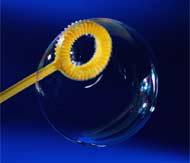 |
Politicians and the media continue to refer to the economic downturn as being the
result of a financial crisis. This is wrong. We have 15 million people out of work because the housing bubble that drove the economy since the last recession finally burst. The
financial crisis may have been good entertainment for those who like to see huge banks collapse, but that was a sidebar. The real story was the rise and demise of the housing bubble. Those
who claim that the real problem was the financial system and its faulty regulation can be disproved with a single word: Spain. Spain is noteworthy because it now has an unemployment rate of
more than 19%, the highest rate in any of the wealthy countries. Spain did not have a financial crisis. In fact, its well-regulated financial system is often held up as model for the United
States. We have an incredibly wasteful and reckless financial industry. But bad financial regulation by itself did not give us 10% unemployment, nor would good regulation have been
sufficient to prevent it. |
|
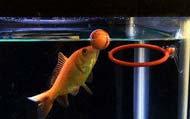 |
To many, the notion that we should care about the suffering of
fish seems absurd. For most, fish amount to little more than swimming protein, a healthy food to be plucked from rivers and seas. After all, many vegetarians eat fish, apparently
convinced that a salmon is more like a lettuce than a lamb. And apart from their backbones, they seem to have almost nothing in common with us. Either way, convincing people that fish can
suffer was never going to be easy. But it seems they not only feel pain, they have a complex emotional life, too. One example: The fat grouper (groper) is adept at chasing smaller fish around
the reef. But sometimes its dinner escapes into cracks and crevices. And so the grouper cleverly hunts with a partner. If the prey flits into a tight hole, the grouper signals to its
eel friend which, being narrow and lithe, is able to finish the hunt. What is extraordinary about this is that, aside from humans who hunt with dogs, this is just about the only example of two
separate species cooperating in a hunt. And it requires intelligence, memory and planning. Does this matter? Well, humans currently kill a staggering 500,000,000,000 fish a
year. And the way we catch - and kill - them is not pretty. We should be prepared to pay for the luxury of kindness. (We ourselves benefit from living in a kinder world.) |
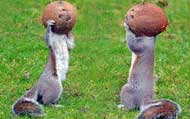 |
The pair look more like starved spacemen tucking into the tropical treats at the back of Jane Robert's home in Fareham, Hants, England. Miss Roberts leaves out two coconuts a week, suspending them
on pieces of string from her washing line, and watches her furry friends dig in. She said: "I make a large hole in the coconut so they can get to the flesh. They cannot get
enough of them. I worry they might get stuck up there one day but they're clever little things." |
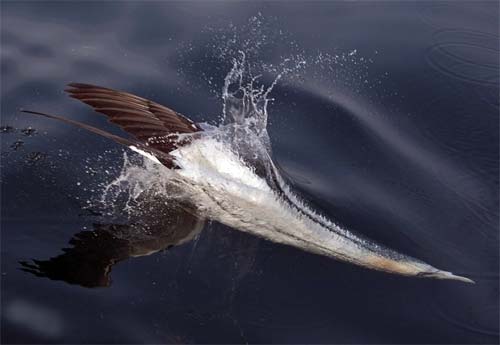
The site of this photographer, Marcel van Balkom, is in Dutch. I see a small
photo like this one on his site's home page, but I can't find a larger image there to link to. I did find a video slideshow that has a similar photo right near the front, but you have to kinda like the music to want to
sit through it. Apparently
this photo won a prize. No surprises - it's quite good... |
 |
George and Alice Swallow found a baby seal in Maine in 1971 and,
realising he was an orphan, decided to take care of him. The Swallows brought him home, put him in a bathtub and tried to feed their little friend with ground mackerel. On the first day, he
didn't want fish, but soon started eating like a vacuum cleaner. That's why they called him Hoover. Hoover was soon too big for the bathtub and moved to a pond behind the house. It was
there that, according to Mr Swallow, he started to imitate the way people talked. When they brought Hoover to the Aquarium, he was 4 months old and already eating more fish than the Swallows could
afford. George told Aquarium staff that he thought the seal could talk, but at that time, no one at the Aquarium believed it. After a few years however, Hoover's talking became more clear,
and scientists started researching the seal's vocalising abilities. The origin of his heavy Bostonian accent was a mystery until researchers met the Swallows - Hoover talked just like
them! He died of old age in 1985. The illustration at left isn't actually Hoover, but is instead another of Marcel van Balkom's excellent nature photographs. |
 |
You don't have to sit through Dumbo and The Jungle Book to stumble upon a
talking elephant: the world's largest land mammals already communicate via a highly advanced "secret" language of their own and are capable of exchanging relatively complex pieces of
information. Females - who live in herds - conduct regular low-frequency conversations within close proximity of each other, perhaps passing on accumulated knowledge or making future plans. |
|
- 1939 Lancia Aprilla Spider - Bodied by Pininfarina, this is one of the first
cars designed using a wind tunnel.
- 2010 Alfa Romeo
2uettottanta - concept car by Pininfarina. When a design house as venerated as Pininfarina celebrates its 80th year in business, the result is mouthwatering.
- 2010 Bugatti Veyron EB 16.4 - It is named after French racing driver Pierre
Veyron, who won the 24 hours of Le Mans in 1939 while racing for the original Bugatti company. It was named "Car Of The Decade" by the BBC television programme Top Gear.
- 1937 BMW 328 Cabriolet - only 462 328s were manufactured before
WWII. The 2-liter, 6-cylinder engine featured a hemi head and was capable of over 100 mph, winning its class at the 1939 Le Mans 24 Hour race and the 1940 Mille Miglia outright.
- 1937 BMW 328 Mille Miglia - The 1937 BMW 328 Mille Miglia is
powered by a 2.0-liter inline-6 pushing 80 horsepower, capable of carrying this 1,830-pound sports car to over 100 mph.
- 1932 Alfa Romeo 8C 2300 LeMans
Racer - An elegant coupe. A former race-car winner, the body of this model hovers just inches over the pavement. It won the Most Elegant Sports Car Trophy at the
Pebble Beach Concours d'Elegance. More.
|
|
 |
The goal for the Intelligence Advanced Research Projects Activity Trust
Program is to advance the capability to assess who can be trusted, even in the presence of stress and/or deception. The program seeks to conduct research that will develop tools for assessing
trustworthiness, which can be measured in scientifically-credible experimental protocols. Phase 1 will tackle the fundamental question that must be addressed first: "How does one design an
experiment such that one knows, with high certainty, that what is being measured is trust, in contexts that are of real-world interest?" In Phases 2 and 3, tools (including sensors and software)
will be developed to more accurately predict trust and trustworthiness in others. The US government is doing this. So perhaps this will replace torture as a technique of
interrogation? That ought to be an improvement. But where might this technology be used as well? On the stand? In job interviews? In performance reviews? By parents,
teachers and principals? In divorce court? |
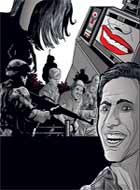 |
Behaviour-recognition software has already infiltrated our lives. A system called NICE helps call centres determine when a phone
customer is becoming angry, and surveillance systems like Perceptrak can detect suspicious behaviour via camera. Researchers across the globe are refining what the technology can do. The next
iterations, such as software by the British company OmniPerception, will identify — and perhaps someday decode — an individual’s gait or smile. Soon even your living room will evaluate you: Last
year, Sony applied for a patent on a mood-detecting device for its PlayStation 3. |

  
In order to live happily, live hidden.
- Jean-Pierre Claris de Florian

For other updates click "Home" (for the latest) or "Next" (for older) below
|
 Animals
Animals Animation
Animation Art of Playing Cards
Art of Playing Cards Drugs
Drugs Education
Education Environment
Environment Flying
Flying History
History Humour
Humour Immigration
Immigration Info/Tech
Info/Tech Intellectual/Entertaining
Intellectual/Entertaining Lifestyles
Lifestyles Men
Men Money/Politics/Law
Money/Politics/Law New Jersey
New Jersey Odds and Oddities
Odds and Oddities Older & Under
Older & Under Photography
Photography Prisons
Prisons Relationships
Relationships Science
Science Social/Cultural
Social/Cultural Terrorism
Terrorism Wellington
Wellington Working
Working Zero Return Investment
Zero Return Investment





















